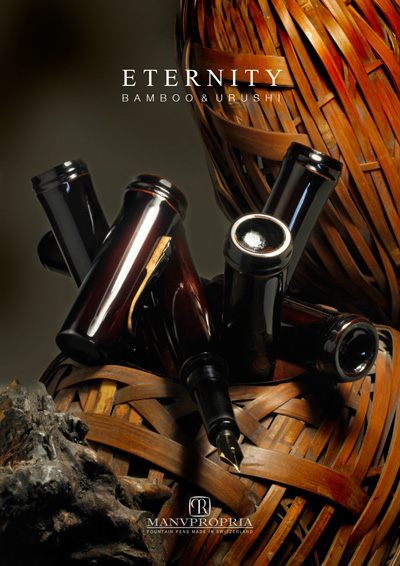Up one level
- Tetsukugi
- Sailor Susutake Rebuilt
- KOKORO Juhi Negoro
- KOKORO Tame Tsugaru
- Kokoro Kage (Shadow)
- KOKORO Take Negoro (Bamboo Negoro)
- Take Negoro Kanji
- ETERNITY
- Eternity Negoro
- ETERNITY Aogai Migin
- KOKORO Collection
- KOKORO with Momiji Yamimaki-e
- KOKORO with Kakôgan & Bamboo (Black Granite)
- KOKORO with Kamifubuki
- KOKORO with KinShiro Nuri (White Gold) & Bamboo
- KOKORO with KinKi Nuri (Yellow Gold) & Bamboo
- KOKORO with KinAkakuchi Nuri (Lighter Vermillion) & Bamboo
- KOKORO with Kin Shû Nuri (Red Gold) & Bamboo
- KOKORO with KinAo Nuri (Blue Gold) & Bamboo
- KOKORO with KinMidori Nuri (Green Gold) & Bamboo
- KOKORO with Iroiro Nashiji & Bamboo
- KOKORO with Iroiro Nashiji & Bamboo
- KOKORO with Fluted Bamboo & Negoro
- KOKORO with Bamboo & Brass Lines
- KOKORO with Bamboo & Aka Kin Ishime-Ji
- KOKORO with Aka Momiji Maki-e & Bamboo
- KOKORO with Starlit Sky & Bamboo
- KOKORO with Botan Negoro & Bamboo
- KOKORO with Mokume Negoro & Bamboo
- KOKORO with Fuki Urushi & Bamboo
- KOKORO with A Drop & Bamboo
- KOKORO with Aogai Migin & Bamboo
- KOKORO with Karakawa Mitateai & Bamboo
- KOKORO with Aka Raden Fubuki Momiji Maki-e & Bamboo
- KOKORO with Shôen & Bamboo
- KOKORO with Raden Fubuki Momiji Maki-e & Bamboo
- KOKORO with Mokumegane & Bamboo
- KOKORO with Rankaku Fubuki & Bamboo
- KOKORO with Oshidashi & Bamboo
- KOKORO with Bamboo & Kuro Kinkumo
- KOKORO with Bamboo & Chadô Nuri
- KOKORO with Bamboo & Aka Ishime-Ji
- KOKORO with Bamboo & Raden Sentoku
- KOKORO with Bamboo & Ishime-Ji
- KOKORO with Bamboo & Aka Kinkumo
- KOKORO with Bamboo & Tame Momiji Maki-e
- KOKORO with Bamboo & Negoro Nuri
- Bambu & Kinsokumitateai
- Fundame no Take (Gold Ground on Bamboo)
- Take & Raden (Raden on Bamboo)
- Susutake/I
- Susutake/II
- Susutake Flat Top
- Susutake Regular
- Susutake Burl
- Momiji Maki-e on Black Bamboo
- Momiji Maki-e on Bamboo
- Bamboo Clip
- Rosewood
- Kiseru & Fuki Urushi
- Sukurome Roiro
- Rosewood / Ebony
- Ebony & Rosewood
- Shôsugiban
- ETERNITY Seirei Nuri
- SIMPLICITY TAKE Roller
- ETERNITY Kin Tame Nuri
ETERNITY
Description:
ETERNITY
Fountain Pens made from Eternal Materials Bamboo, Urushi and Gold
The ETERNITY Fountain Pen is manufactured from 3 eternal materials, Bamboo, Urushi Lacquer and Gold. As each bamboo stalk is different also each bamboo pen is different a unique piece.
The bamboo is sealed by many layers of transparent «Sukurome» Urushi and mirror polished. As an additional element each pen is equipped with a clip, a clip also made of bamboo and lacquered.
URUSHI
Urushi is an enduring all-natural wonder material. This lacquer creates a hard, durable film that repels water, heat, salt, acids, and alkalis. It can even withstand nitrohydrochloric acid, which dissolves gold. Natural lacquer also has superior antiseptic and antibacterial qualities. Lacquered items several thousand years old have been excavated intact, their sheen unblemished.
Bamboo
The Japanese word for "bamboo" is "take". Bamboo is a very strong plant. Because of its sturdy root structure, it is a symbol of prosperity in Japan. For years, people were told to run into the bamboo groves in the event of an earthquake, because the bamboo's strong root structure would hold the earth together.
Simple and unadorned, the bamboo is also symbolic of purity and innocence. "Take o watta youna hito" literally translates into "a man like fresh-split bamboo" and refers to a man with a frank nature. Bamboo is found all over in Japan because the warm, humid climate is well suited to its cultivation.
It is frequently used in construction and handicrafts. Shakuhachi, is a wind instrument made of bamboo. Bamboo sprouts (takenoko) also have long been used in Japanese cuisine. Simple and unadorned, the bamboo is also symbolic of purity and innocence.
Bamboo & Urushi, processed by experienced Artisans and well maintained by its owner makes it an eternal object. The oldest Bamboo work found during excavations in China is a Urushi lacquered side-blown Bamboo Flute that dates back from 433 BCE.
From the Shang and Zhou right through to the Wei (220-265) and Jin (265-420), bamboo and wood were to remain the main writing materials. This prolonged period of some 2,000 years has come to be known in Chinese history as the Age of the Bamboo Slip.
